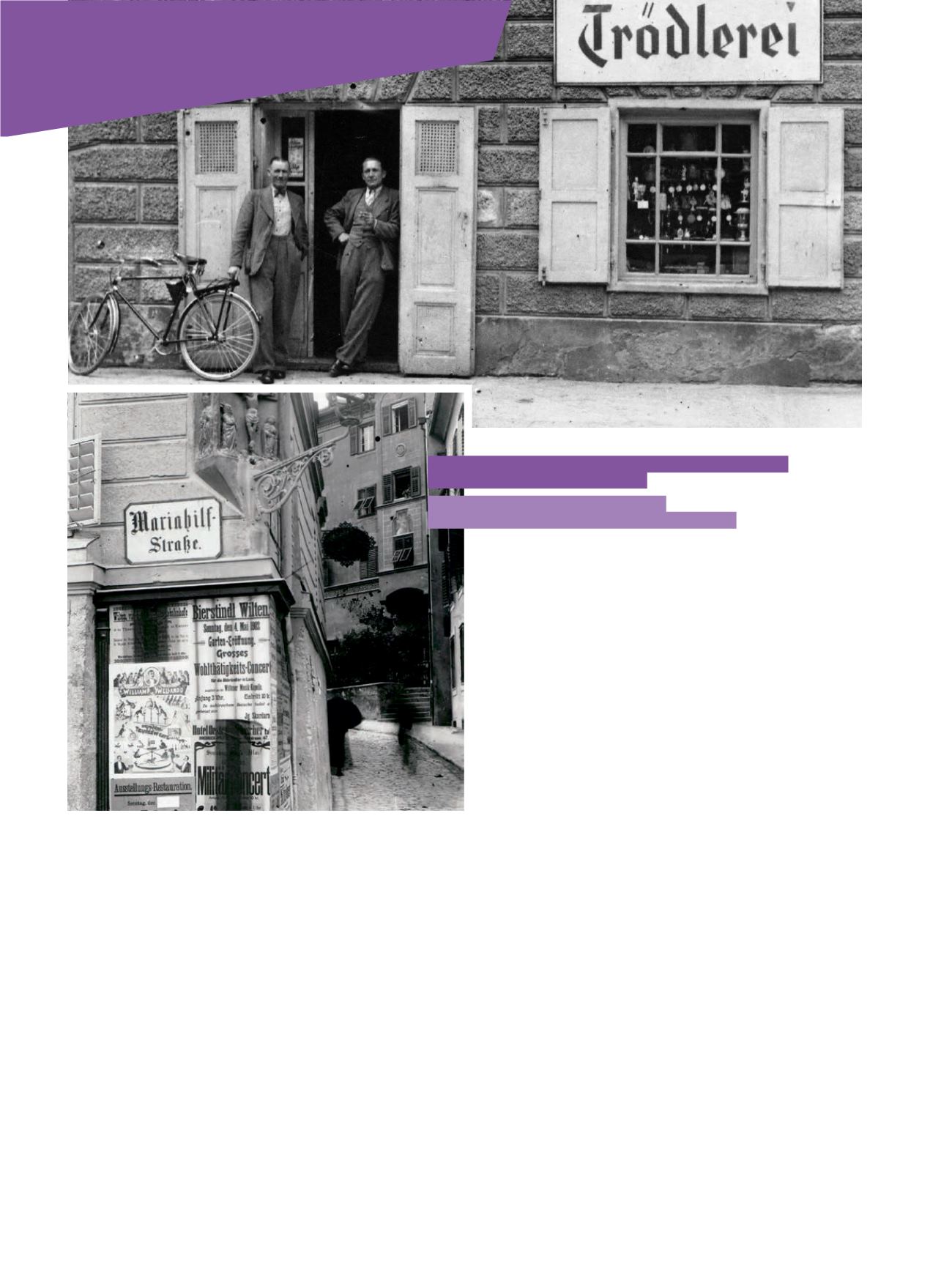

WELCOME
||
46
ing city should be on the opposite bank: In 1180, today’s Old Town was
built and connected to the north side via a bridge - slowly showing a
less connecting but more and more separating character.
Dark times
The reason for the settlement’s dingy reputation was amongst others the
establishment of the leprosarium and the public place of execution. Over
the centuries, Anpruggen - which received its name around the 15th cen-
tury - developed into some sort of suburb of the city and transients often
didn’t even realise that it was actually part of Innsbruck. Nevertheless, it
slowly became a home and a meeting place for craftsmen, stonemasons,
tanners, bell founders and other guilds. Anpruggen was known for its
many foundries and there are still some streets today that are named af-
ter those famous foundries, which existed for well over hundreds of years.
When at the end of the 15th century, however, the street on the oppo-
site bank became the main road, the left bank’s street became progres-
sively less important and as a result the settlement’s reputation suffered
noticeably. Even the splendid row of houses, which was built in 1473 after
the disastrous inferno, couldn’t retrieve the situation. So it wasn’t exactly
an area, where people liked to hang out. The former main road rapidly fell
into disrepair. After heavy rainfall, all the wastewater gathered there and
for this reason it was given the name ‘Koatlackn’, which in Tyrolean dia-
lect means something like puddle of dirt. “The so-called ‘Kothlacken’ is a
small alleyway in the district of Sankt Nikolaus. Actually, it is a side street
of the street Innstraße, which leads to the wide church square in front of
the elevated gothic church Sankt Nikolaus. The locals here, especially the
women, are quite different. The area is not appealing. The old houses look
partly abandoned and dilapidated. You see a lot of wretchedly dressed
women and children. Every now and then you can hear hysteric screams
coming from the quarrelling housewives – they are renowned for their un-
pleasant personalities... Get to know them, however, and you will find out
that they are a lot better than their reputation. Kind-hearted, helpful and
honest,” that’s how the author Rudolf Greinz describes his experiences in
the book “Die Stadt am Inn”. It was only in 1829, when the protests from
local residents became so loud, that the alleyway was finally restored.
Today
Only a few places can look back to such an agitated history. Mocked and
rejected but at the same time a home of art and craftsmanship, the dis-
trict of Anpruggen is definitely a place of activity and a melting pot of lo-
cals and new residents. A few years ago, things started to change on the
opposite bank. The inhabitants are now proud of their district, the oldest
one of the city, which is so close to the centre but yet so different.
Its history can still be felt, like a ghost wandering through the small al-
leyways reminding the people of how much tradition was born here. The
district today is somehow a reflection of its past, therefore it is not surpris-
ing that many artists and craftsmen are magically attracted by this place.
It is precisely these people who breathe new life into the historic walls and
continue a tradition that enabled the existence of a city on the other side
of the river. Anpruggen - without losing its identity - is slowly but surely
becoming a part of that city.
||
Tanz-Kränzchen und Trödlerei: Ecke Mariahilfstraße und Höttinger Gasse
um 1905 (li.), Trödlerei Stasny um 1940. //
The corner Mariahilf Street and Höttinger Gasse
around 1905 (lt.), The second-hand store Stasny around 1940.
















